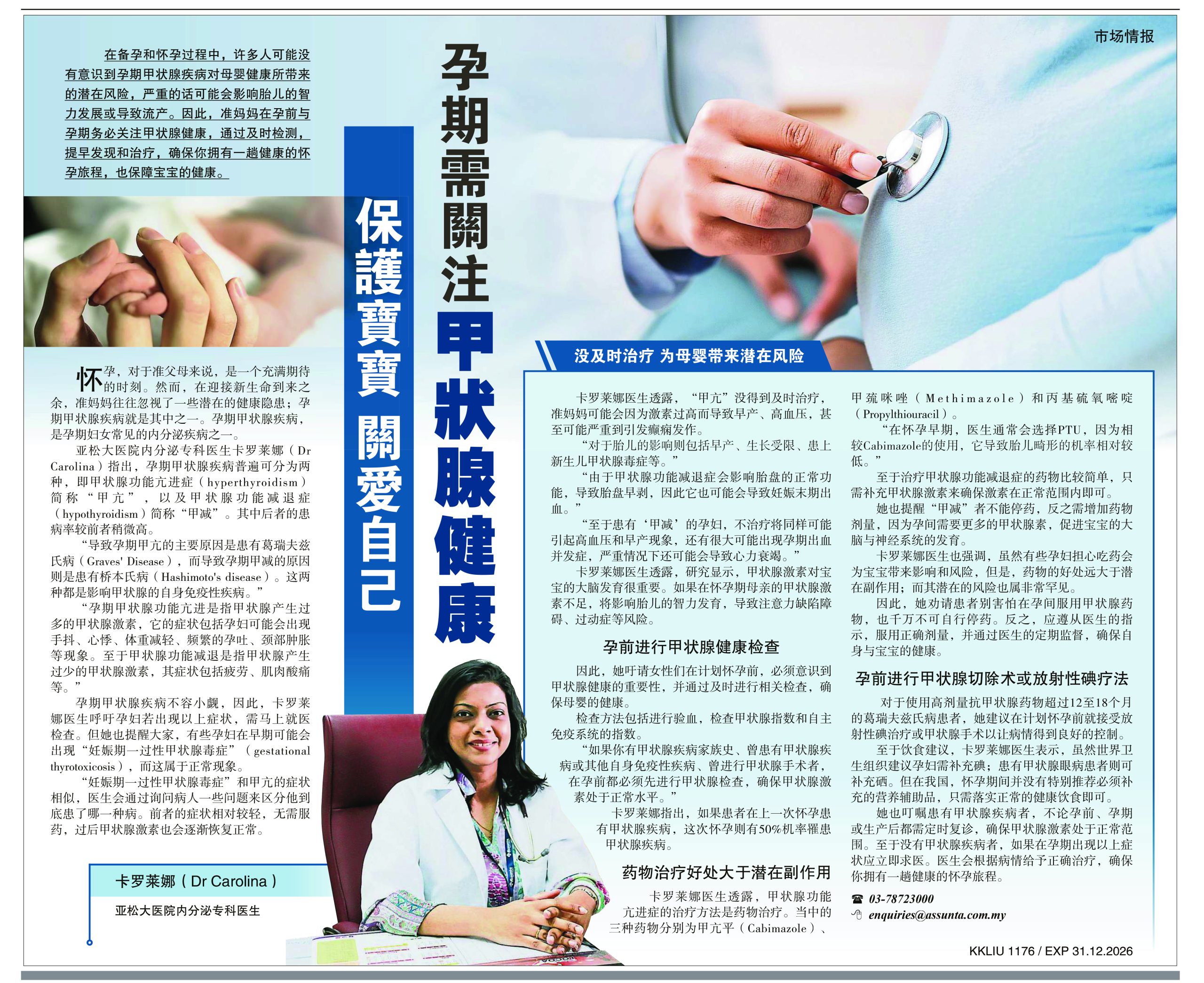When 84-year-old Mr A fell in the bathroom one fine day, his loving family brought him to the hospital for medical treatment. Every time his arm was touched, he would shriek in pain. An x-ray of his arm, however, showed no fracture or any other damage, so he was sent home with pain relief medications with the diagnosis of ‘penyakit tua’ or ‘ageing’.

When he got home, he was often tired and was sleeping all the time. Assuming he was still recuperating, his family thought nothing of it until a few days later when he started to refused to eat. He became so weak that he could not walk or go to the toilet on his own.
His family were at their wits end, as all he could do was sip drinks and sleep all day long. His children debated among themselves whether to bring him to the hospital again, but were hesitant as the previous doctor had said Mr A was fine.
When the family finally brought him to the hospital again, Mr A was so drowsy and weak he had to be wheeled to the hospital. Upon recommendation, Mr A was given a thorough geriatric assessment where he was found to have suffered a mild stroke and infection. More shocking was when Mr A was found to be suffering from undiagnosed dementia.
The family was shocked, as they thought his deteriorating health had been due to old age. They had not realised that he had been having trouble controlling his bowel and bladder over the years. A CT scan further confirmed the diagnosis of dementia when it showed signs that Mr A have had lots of undiagnosed mini strokes previously.
After being given antibiotics and hydration, Mr A recovered somewhat, but still had difficulty swallowing and was still drowsy all the time. His chest infection got worse, which resulted in food into his chest and causing lung infection.
It was a difficult moment when the doctor explained to the family that Mr A had advanced dementia and was succumbing to his deteriorating health. The family struggled with what to do; musch as they wanted to bring him home for his final days, they were afraid they were unable to cope. Nobody wanted to make the final decision on what to do next and be held accountable if anything happened.
When one of the family members finally stepped up to say that they should ‘bring papa home to rest’, the family was filled with trepidation and anxiety. With the help of AsPacc (Assunta Palliative Care), the family found medical equipment they could loan and learnt how to keep Mr A comnfortable.
Mr A passed away two weeks later, surrounded by his loved ones in his own home, according to the family’s request. With the right support system by the hospital and family, Mr A had a dignified, gentle passing.
Key Learning Points
Lesson No 1: Undiagnosed dementia
Despite’s the ageing population (above 60 years old) today, there is still poor general awareness on geriatric care. Many healthcare providers still use the general term of ‘sakit tua’ (ageing) to describe signs of poor health, not realising that signs such as short-term memory loss and gradual changes in behaviour. Other signs to look for include increasing inability to handle daily affairs such as driving, gardening, household chores, managing finances, personal care, even making phone calls.
Lesson No 2: Beware of falls
Falls are very common among the elderly and can have serious implications such as fractures and injuries. Falls among the elderly can be multi-faceted and can be caused by various factors such as poor gait, poor vision, loss of balance, chronic joint pains or arthritis problems, poor muscle strength and medical conditions such as low blood pressure, incontinence (resulting in frequent or night visits to the toilet), advanced diabetes, osteoporosis and heart disease. Many elderly people will also try to hide their increasing clumsiness, and assume that their falls are just accidents.
If a patient has a history of falls, it is important to take preventive measures for future falls. A multi-disciplinary approach is necessary to help the patient recover and have a better quality of life, such as going for physiotherapy or occupational therapy to increase joint and muscle strength. It may also be necessary to make changes in the home such as build ramps, bathroom rails and stairway lights.
Lesson No 3: Care for the caregiver
Caring for the elderly can be stressful and thankless. Many caregivers end up with carer stress and fatigue, feeling helplessly trapped in their circumstances. In the Asian culture, it is taboo for most families to send their elderly parents or grandparents to homes. It is common for families to face conflicts and fighting in decision-making.
The solution is to seek help from an experienced clinician who is able to provide counselling and help the family to reach wise decisions with regards to treatment, home or hospitalisation, and other palliative care options.
Lesson No 4: Handling end-of-life issues
The fear and uncertainty surrounding life after death makes discussions about death a social taboo. This often puts families in a difficult position- on one hand, they want to honour the wishes of their loved one, but on the other hand, they do not want to appear uncaring by asking the patient to list his/her final wishes.
Although it is a difficult topic, it is necessary (and kinder) to make your final wishes when your mental faculties are intact so that your family will know what to do when you are unable to express yourself verbally.
Lesson No 5: Get a right diagnosis
If your elderly parents or relatives are displaying unusual behaviour, it might be advisable to send them for a comprehensive geriatric assessment to get a proper diagnosis. That may help capture some undiagnosed conditions that can help you plan treatments or care. If detected early, the assessment can help arrange for potential long-term care in the progression of disability or diseases such as osteoporosis, dementia, Parkinson’s disease or others.
Related Articles

Exploring The Intersection of ENT Health and Diving Medicine: A Guide for Healthcare Professionals
Read More »









